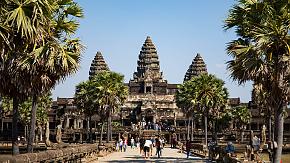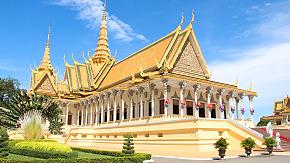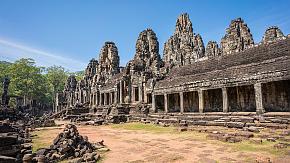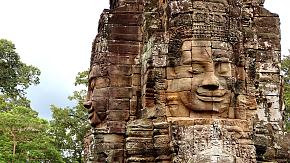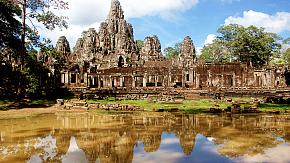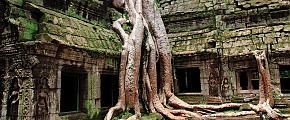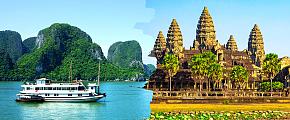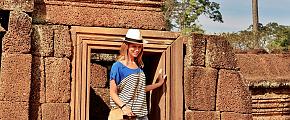Top 10 Interesting Angkor Wat Facts in Cambodia
A Trip to Cambodia is not complete without visiting Angkor Wat. Head deep into the Cambodian jungle to discover the lost city of Angkor - a religious monument said to be the largest one on earth. Giant tree roots strangle many temples, exquisite bas-reliefs tell ancient stories, and massive sandstones lie on the ground. Now step back in time with the top 10 mind-blowing facts about Angkor Wat, and find out the mysterious temple complex hidden deep in the lush jungle.
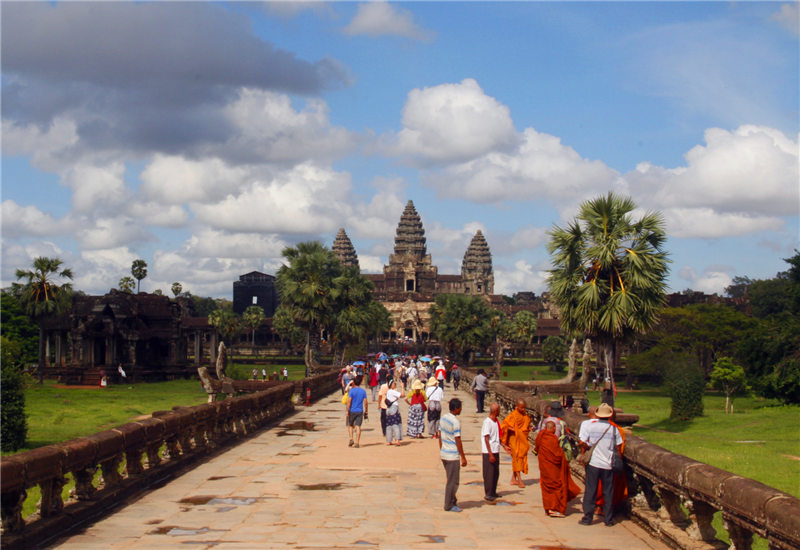
- Largest, Unique, and Important
- 30 Years, 3300 Pounds, 300,000 Laborers
- Hidden Universe Codes
- Tomb Raider Setting
- Bas-Reliefs Have a "Changing Face"
- Angkor Wat Means "City of Temples" in Khmer
- Angkor Wat Was Shared by Two Religions
- Recreate Mount Meru From Hindu Mythology
- Typically Related to Death in Hinduism
- An Amazing Ancient City Beneath Its Surface
Largest, Unique, and Important
The Largest Religious Monument: Angkor Wat covers an area of over 400 acres/1.6 km², equivalent to 200 football fields.
Why Unique: Today, Angkor Wat is the only ancient monument directly and completely depicted on a national flag in the world.
Why Important: It was listed as a UNESCO World Heritage Site in 1992.
30 Years, 3300 Pounds, 300,000 Laborers
Angkor Wat was built by Suryavarman II in the first half of the 12th century (around 1113 - 1150) as a state temple and capital city, which have been extremely labor-consuming.
According to historical records, it is believed that the construction took approximately 30 years (some decorations may have continued for longer), possibly involving 300,000 laborers and 6,000 elephants. Without any mechanical assistance, sandstone (weighing over 1,5 tons/3300 pounds at its heaviest) was transported from Phnom Kulen, about 50 kilometers/31 miles away.
Hidden Universe Codes
For thousands of years, the sun has risen precisely from the top of the central tower in the equinox, reflecting the silhouettes of the five pagodas perfectly in the pools of water. The number "108" is hidden everywhere, which symbolizes the order of the universe in Hinduism, such as the 108 steps and the 108 columns. The most amazing thing is that Angkor Wat is believed by some to be aligned with the Draco constellation in 11,50 CE, which is enough to make astronomy enthusiasts go crazy!
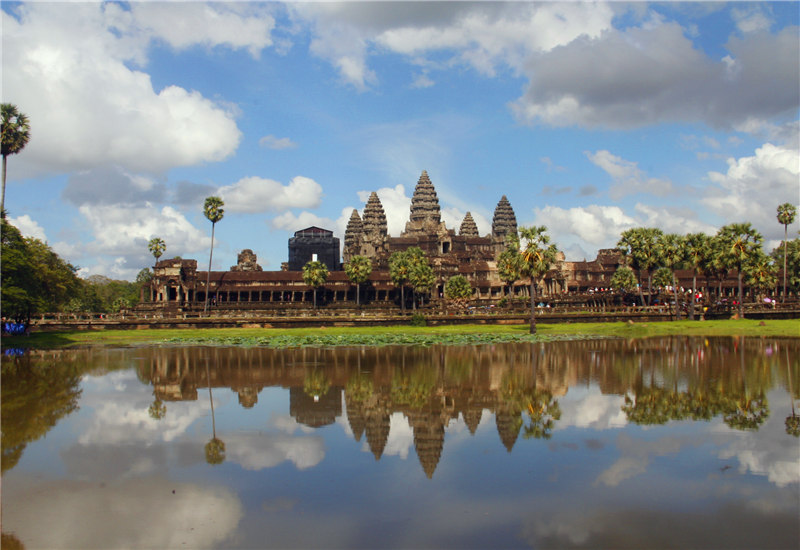 An Iconic Image of Angkor Wat
An Iconic Image of Angkor Wat
Tomb Raider Setting
The secret place where Angelina Jolie traveled in "Tomb Raider" is the Ta Prohm temple near the Angkor Wat, which is entwined by giant trees. The roots of these banyan trees are like giant pythons devouring the stone gates, creating the strange sight of a "tree wrapped temple". Jolie once almost fell on the slippery roots, and now the most famous "Tomb Raider tree" has become a popular tourist attraction.
Bas-Reliefs Have a "Changing Face"
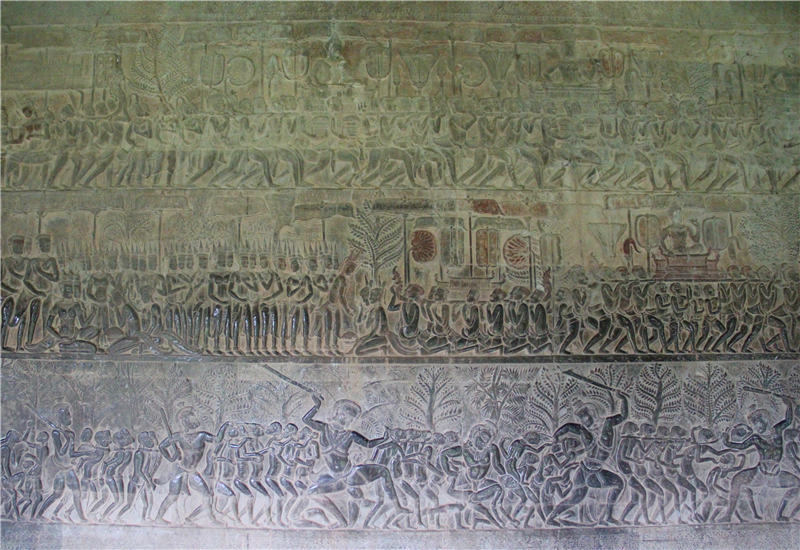 Bas-Reliefs on the Wall of Angkor Wat
Bas-Reliefs on the Wall of Angkor Wat
The over 520-meter-long stone carvings are not only a work of art, but also a "circle of friends" of the Khmer people in the 12th century. You can see the "changing face" bas-reliefs, such as the warrior is cool in the morning but smiles at noon. They were created by ancient craftsmen using the reflective properties of sandstone or a special carving method. Standing at different angles, you can see the other kinds of pictures.
Angkor Wat Means "City of Temples" in Khmer
In Khmer, the Cambodian language, Angkor means "city" or "capital city", and Wat means "temple grounds". So Angkor Wat means "Temple City" or "City of Temples". Its original name was Vrah Vishnuloka or Parama Vishnuloka, meaning the sacred dwelling of Vishnu in Sanskrit.
Angkor Wat Was Shared by Two Religions
It was originally built as a Hindu temple dedicated to the god Vishnu, breaking the previous kings' tradition of worshiping Shaiva. It gradually turned into a Buddhist temple towards the end of the 12th century and is still used for worship today.
Recreate Mount Meru From Hindu Mythology
Angkor Wat is an architectural marvel that brings the Hindu mythology of Mount Meru down to earth! Mount Meru is the sacred five-peaked mountain standing in the center of the universe. It's said that the three Hindu chief gods - Brahma (the Creator), Vishnu (the Preserver) and Shiva (the Destroyer), and Hindu demi-gods (Devas) reside on the top of this mountain. The five central towers are perfect replicas of the five peaks. The tallest main pagoda symbolizes the center of the universe, and four smaller pagodas represent the four continents.
Typically Related to Death in Hinduism
Unlike most Angkorian temples, which are commonly directed to the east, Angkor Wat is oriented to the west, a direction associated with death in Hindu culture. So, many archaeologists and scholars have concluded that Suryavarman intended to use it as a funerary temple. Also, the direction means it faces the sunset, which adds to its beauty and attracts many visitors at this time.
An Amazing Ancient City Beneath Its Surface
Do you think it is just an amazing temple complex on the surface? Lidar technology has revealed a more astonishing truth: there is a super ancient city beneath the jungle surrounding Angkor Wat!
This 12th-century city boasted a sophisticated management system, including reservoirs, canals, and flood control facilities, enabling the Khmer people to live comfortably during both the rainy and dry seasons. Nowadays, when you walk on the stone paths of Angkor Wat, you'll feel the magic of the "underground city".
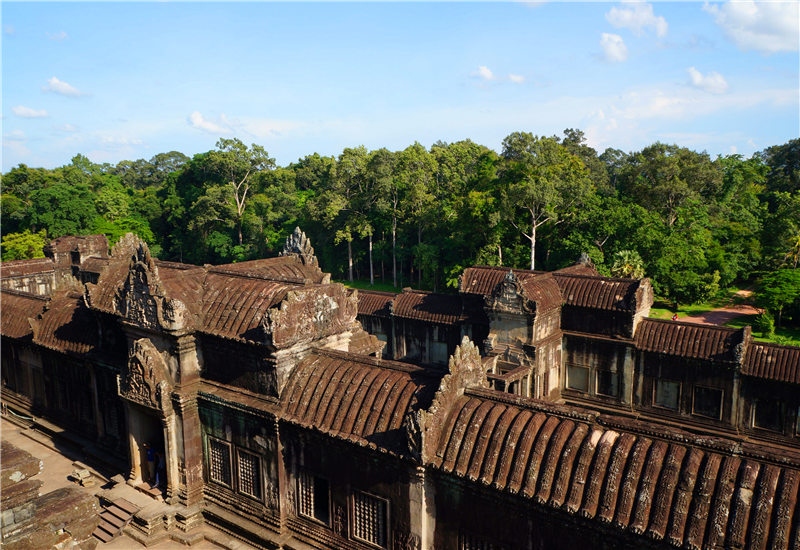 Angkor Wat in the Jungle
Angkor Wat in the Jungle
Plan Your Cambodia Trip to Angkor Wat With Odynovo
Angkor Wat is a must-see for any Cambodia tour, forming a wonderful picture backdrop that one treasures forever. You will always remember the feeling of wandering the sprawling and carved ruins. You are welcome to contact us for a tailor-made vacation to the intriguing Angkor Wat.
What Our Clients Say
Explore the latest verified reviews of Odynovo's travel services on Tripadvisor, Google, Trustpilot, Product Review and more trusted platforms.

